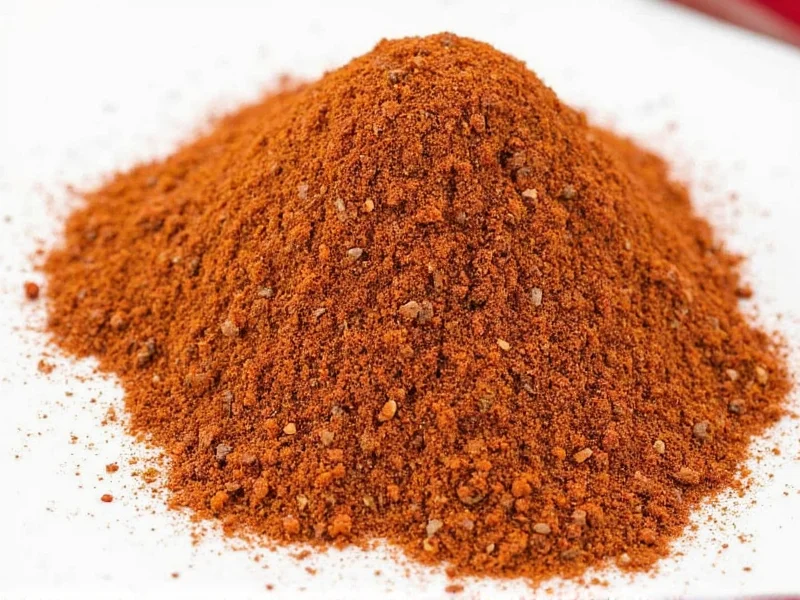Understanding Beef Taco Seasoning Composition
Authentic beef taco seasoning relies on a harmonious blend of spices that complement rather than mask the flavor of the meat. The foundation consists of chili powder (providing earthy depth), cumin (adding warm bitterness), and garlic powder (delivering savory notes). These three elements form what Mexican chefs call the “holy trinity” of taco seasoning. Additional components like smoked paprika contribute complexity, while oregano adds herbal brightness. The ideal blend maintains a 3:1:1 ratio of chili powder to cumin to garlic powder as its base structure.
Historical Evolution of Taco Seasoning Blends
The modern taco seasoning blend reflects centuries of culinary adaptation. Indigenous Mesoamerican cultures first combined native chilies with meat as early as 1000 BCE, documented in archaeological studies of Zapotec cooking vessels. Spanish colonization introduced cumin and oregano in the 16th century, creating foundational flavor profiles still used today. The standardized spice mix emerged in 1930s Texas with퀵 Tex-Mex entrepreneurs like Adelina Woolley of San Antonio, who developed the first commercial blends for American kitchens. Mass-market versions appeared in the 1970s with added fillers for shelf stability, while the 2000s “clean label” movement spurred returns to traditional ratios. Food historians at the Journal of Ethnic Foods confirm this evolution mirrors broader patterns in global cuisine adaptation, where commercialization initially sacrifices authenticity before consumer demand drives artisanal revival (Journal of Ethnic Foods, 2019).
Homemade vs. Commercial Seasoning: Key Differences
Store-bought taco seasoning often contains anti-caking agents, sugar, and sometimes flour or cornstarch as thickeners. These additives can create a pasty texture when cooked with beef. Homemade versions give you complete control over ingredients and flavor intensity. The most significant advantage of making your own beef taco seasoning is avoiding unnecessary additives while achieving superior flavor integration with your meat.
| Component | Commercial Blend | Homemade Blend |
|---|---|---|
| Primary Ingredients | Chili powder, cumin, salt, sugar, maltodextrin | Pure spices without fillers |
| Texture After Cooking | Can become pasty or gummy | Coats meat evenly without clumping |
| Sodium Content | Typically 300-500mg per serving | Adjustable to preference |
| Flavor Control | Fixed profile | Customizable heat and depth |
Contextual Application Boundaries
While versatile, beef taco seasoning has specific regional and dietary constraints requiring adaptation. Authentic Mexican regional cuisines vary significantly: Northern styles emphasize bold cumin with minimal chili, while coastal regions use citrus and fresh herbs incompatible with dried spice blends. The FDA mandates “gluten-free” products contain less than 20 ppm gluten (FDA, 2020), necessitating certified gluten-free spices due to cross-contamination risks in commercial facilities. For hypertension management, the American Heart Association recommends sodium intake below 1,500mg daily (AHA, 2021), making salt-adjustable homemade blends essential. The table below details critical application boundaries:
| Context Factor | Recommended Approach | Key Limitation |
|---|---|---|
| Authentic Regional Mexican Dishes | Avoid pre-mixed blends; use fresh regional ingredients (e.g., Yucatan achiote paste) | Standard blends reflect Tex-Mex, not Oaxacan or Baja styles |
| Gluten Sensitivity | Use only certified gluten-free individual spices | Commercial “gluten-free” labels require verification per FDA standards |
| Low-Sodium Diets | Reduce salt by 50% and boost umami with dried mushrooms | Commercial blends cannot be adjusted; sodium remains fixed |
| Seafood Applications | Reduce blend ratio to 1.5 tbsp/lb and add lime zest | Standard beef ratios overwhelm delicate seafood flavors |
Perfect Homemade Beef Taco Seasoning Recipe
Creating authentic beef taco seasoning requires precise measurements and quality ingredients. For the best results, use fresh, high-quality spices rather than old pantry staples. The following recipe yields enough seasoning for 4 pounds of ground beef:
- 1/4 cup chili powder (preferably ancho for depth)
- 2 tablespoons ground cumin
- 2 tablespoons garlic powder
- 2 tablespoons onion powder
- 1 tablespoon smoked paprika
- 2 teaspoons dried oregano (Mexican oregano preferred)
- 1-2 teaspoons cayenne pepper (adjust for heat preference)
- 2 teaspoons sea salt
- 1 teaspoon black pepper
Mix all ingredients thoroughly in a glass bowl, then store in an airtight container away from light and heat. Properly stored, homemade seasoning maintains peak flavor for 3-4 months.
Optimal Usage Techniques for Ground Beef
The timing and method of incorporating seasoning significantly impacts final flavor. After browning 1 pound of ground beef and draining excess fat, sprinkle in 2 tablespoons of your seasoning blend. Add 1/2 cup water or broth to create a sauce that allows the spices to penetrate the meat. Simmer uncovered for 5-7 minutes, stirring occasionally, until the liquid reduces and coats the beef. This technique prevents clumping and ensures even flavor distribution without making the meat soggy.
Common Preparation Mistakes to Avoid
Many home cooks make critical errors when using beef taco seasoning that diminish results. Adding seasoning to raw meat before cooking causes spices to burn during browning. Using insufficient liquid creates a dry, unevenly seasoned product. Over-seasoning—more than 3 tablespoons per pound of beef—overwhelms the meat's natural flavor. Adding seasoning too late in the cooking process prevents proper flavor integration. Remember that commercial blends often contain salt, so additional salting may create an overly salty dish.
Storage and Shelf Life Considerations
Proper storage maintains your homemade beef taco seasoning's potency. Use amber glass jars with tight-sealing lids to protect from light and moisture. Store in a cool, dark cupboard—not above the stove where heat fluctuates. Avoid refrigeration, as moisture absorption degrades quality. Check freshness by aroma; if spices no longer emit a strong scent when rubbed between fingers, they've lost potency. For extended shelf life, freeze portions in ice cube trays covered with plastic wrap, then transfer to freezer bags.











 浙公网安备
33010002000092号
浙公网安备
33010002000092号 浙B2-20120091-4
浙B2-20120091-4